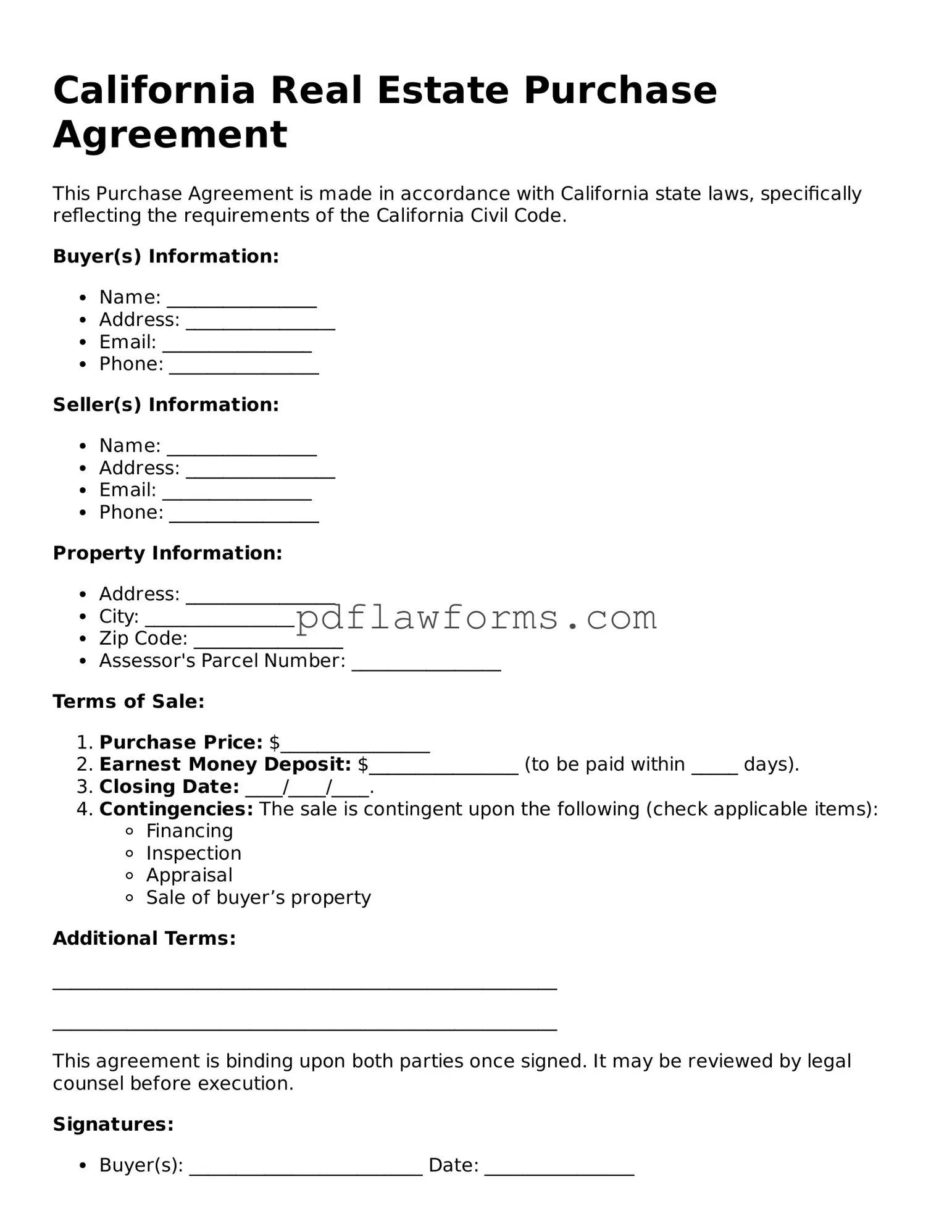Filling out the California Real Estate Purchase Agreement can be a daunting task for many buyers and sellers. One common mistake is failing to provide complete information about the parties involved. It is essential to clearly identify all buyers and sellers, including full names and contact information. Incomplete details can lead to confusion later on, potentially delaying the transaction.
Another frequent error is neglecting to specify the purchase price accurately. It may seem straightforward, but even minor discrepancies can cause significant issues. Buyers should double-check the numbers to ensure they reflect the agreed-upon amount. Additionally, the payment terms must be clearly outlined. This includes the deposit amount and how the remaining balance will be paid. Clarity in these areas helps avoid misunderstandings.
Some individuals overlook the importance of including contingencies in the agreement. Contingencies are conditions that must be met for the sale to proceed. For instance, a buyer might want to include a contingency for obtaining financing or for a satisfactory home inspection. Without these provisions, buyers may find themselves locked into a deal that does not meet their needs or expectations.
Additionally, failing to understand the implications of the closing date can lead to complications. The closing date is a crucial aspect of the agreement, as it determines when the transfer of property ownership will take place. If this date is not clearly defined or agreed upon, it can result in disputes between the parties. Both buyers and sellers should ensure that they are on the same page regarding this timeline.
Another mistake often made is not consulting with a real estate professional or attorney before submitting the agreement. Many individuals believe they can navigate the process independently, but the nuances of real estate law can be complex. Professional guidance can help identify potential pitfalls and ensure that the agreement is legally sound and in the best interest of all parties involved.
Lastly, individuals sometimes fail to read the entire agreement thoroughly before signing. Each section of the document holds significance, and overlooking even a small detail can have serious consequences. Taking the time to review the entire agreement helps ensure that all parties are aware of their rights and obligations. It is a vital step in protecting one’s interests in the transaction.
